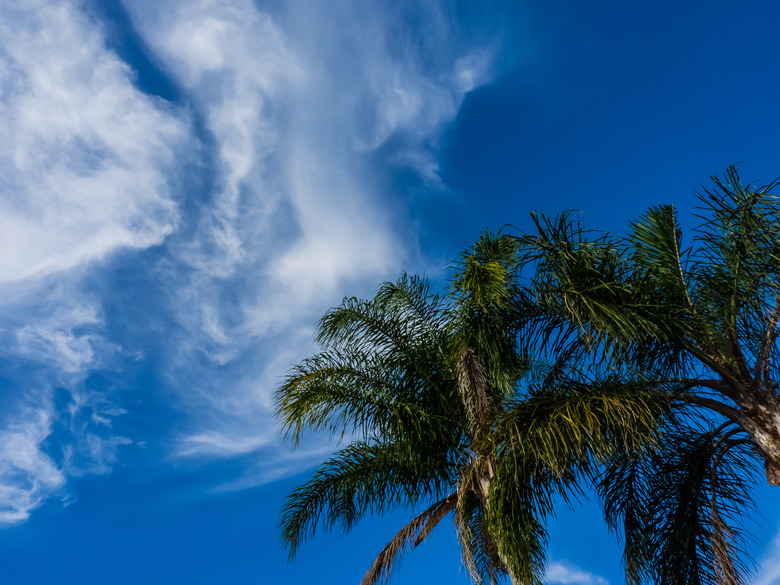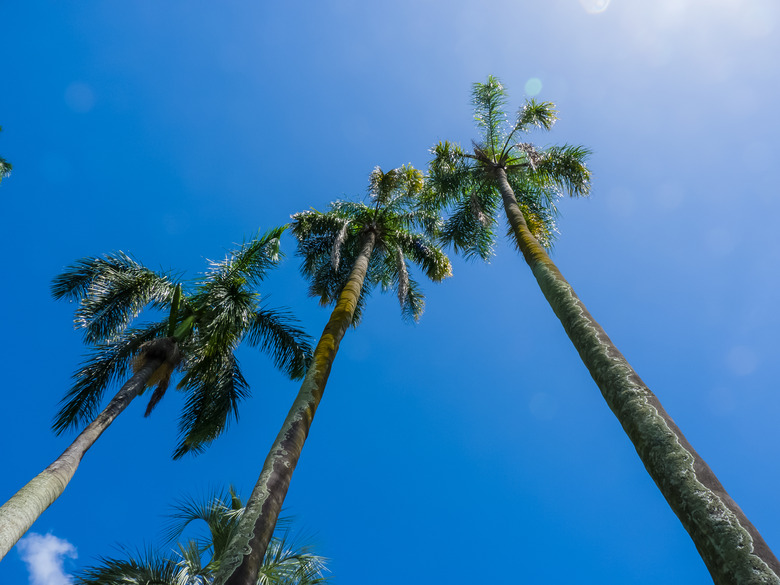How To Plant A Queen Palm
When the design goal is to simulate an oasis, landscapers frequently rely on the majestic and graceful queen palm, a mainstay next to pools and patios and in public spaces in Arizona, Florida and California.
Successfully growing a queen palm (Syagrus romanzoffiana, USDA hardiness zones 10 to 11) is not a slam dunk, however, because this tree is particular.
About the Queen Palm
This fast-growing palm can put on 2 to 3 feet in a single year, a tremendous growth rate for any tree. The queen palm tree typically reaches 20 to 50 feet in height, topped by 10-foot-long fronds that can form a canopy spread of 20 to 30 feet.
The queen palm does flower, but the flowers are inconspicuous. If the flower clusters—weighing up to 100 pounds!—are not removed, the tree produces copious amounts of bright orange dates called drupes, which litter the ground and can sprout to create unwanted seedlings.
The queen palm originates from the tropical areas of South America, specifically southern Brazil and northern Argentina. It is a member of the Arecaceae family and is sometimes also classified as Arecastrum romanzoffianum or Cocos plumosa.
Planting a Queen Palm
The queen palm has specific growing requirements, so take these into consideration when you are choosing a planting location.
Warning
While you might be tempted to plant a queen palm in your lawn, lawns generally require far more water than queen palms need, so a location where you can control irrigation is more suitable. As an alternative, create a grass-free ring all around the palm.
Environmental Requirements
**Soil pH:** While it's not fussy about soil texture, being able to grow in loam, sand or clay, the queen palm absolutely requires an acidic pH. When grown in alkaline soils, it develops chlorosis from iron deficiencies, evident in the yellow color of young leaves.
Before planting, perform a soil test so you can adjust the pH if necessary.
**Temperature:** While considered somewhat more cold-hardy than many other palms, the queen palm will be damaged in temperatures below 25°F and cannot survive in temperatures of about 16°F or below. If your location regularly experiences cold temperatures like these, it is unlikely to be able to support this tree.
**Sun:** The queen palm requires full sun but can grow in reflected sun, such as sun bouncing off a pool or concrete patio.
Planting Day
If you acquired your palm from a nursery in a container, you can safely plant it any time of year. However, if you are transplanting a palm already growing in the landscape, late spring is the best time—it provides the tree with a long growing season for establishing roots.
Choose a sunny location at least 10 feet from any structures and 5 feet from other vegetation. Dig a hole large enough to accommodate the rootball, and plant the tree at the same level as it was in its container. Water it regularly until it is established.
Queen Palm Care
The queen palm requires regular maintenance if you want it to look its best.
Fertilization and Nutrient Deficiencies
All palms, and the queen palm is no exception, are susceptible to various nutrient deficiencies exacerbated by alkaline pH. These include not only an iron deficiency but also potentially manganese, potassium and boron deficiencies.
The University of Florida recommends regular applications of a slow-release formula of 8-2-12+4 Mg or 8-0-12-4 fertilizer, where the first three numbers define the ratio of nitrogen, phosphorus and potassium, and the fourth number is magnesium (Mg).
For a manganese deficiency, apply manganese sulfate or spray it directly on the foliage for quicker results. For a boron deficiency, apply slow-release boron.
Before applying any specific nutrients, consult an expert to evaluate your tree and its environment so you can be sure you address any deficiencies correctly.
Irrigation
While moderately drought tolerant, this tree does require irrigation a couple of times a month during the growing season, particularly if the weather is very hot.
Frond Removal
Remove dead fronds regularly to encourage the production of new fronds. Wait until they are fully brown, because they still supply the tree with nutrients while they are green.
Further, removing fronds that are still firmly attached to the trunk—even if they are brown—can create wounds that invite disease.
Disease Control
Unfortunately, palms are susceptible to an array of diseases, many of which can be fatal. The primary fungal diseases are trunk rot, causing damage to the area just below the crown, and butt rot, usually visible on the bottom 3 feet of the trunk.
These diseases can cause the tree to topple over. There is no cure for these afflictions; tree removal is the only option.

